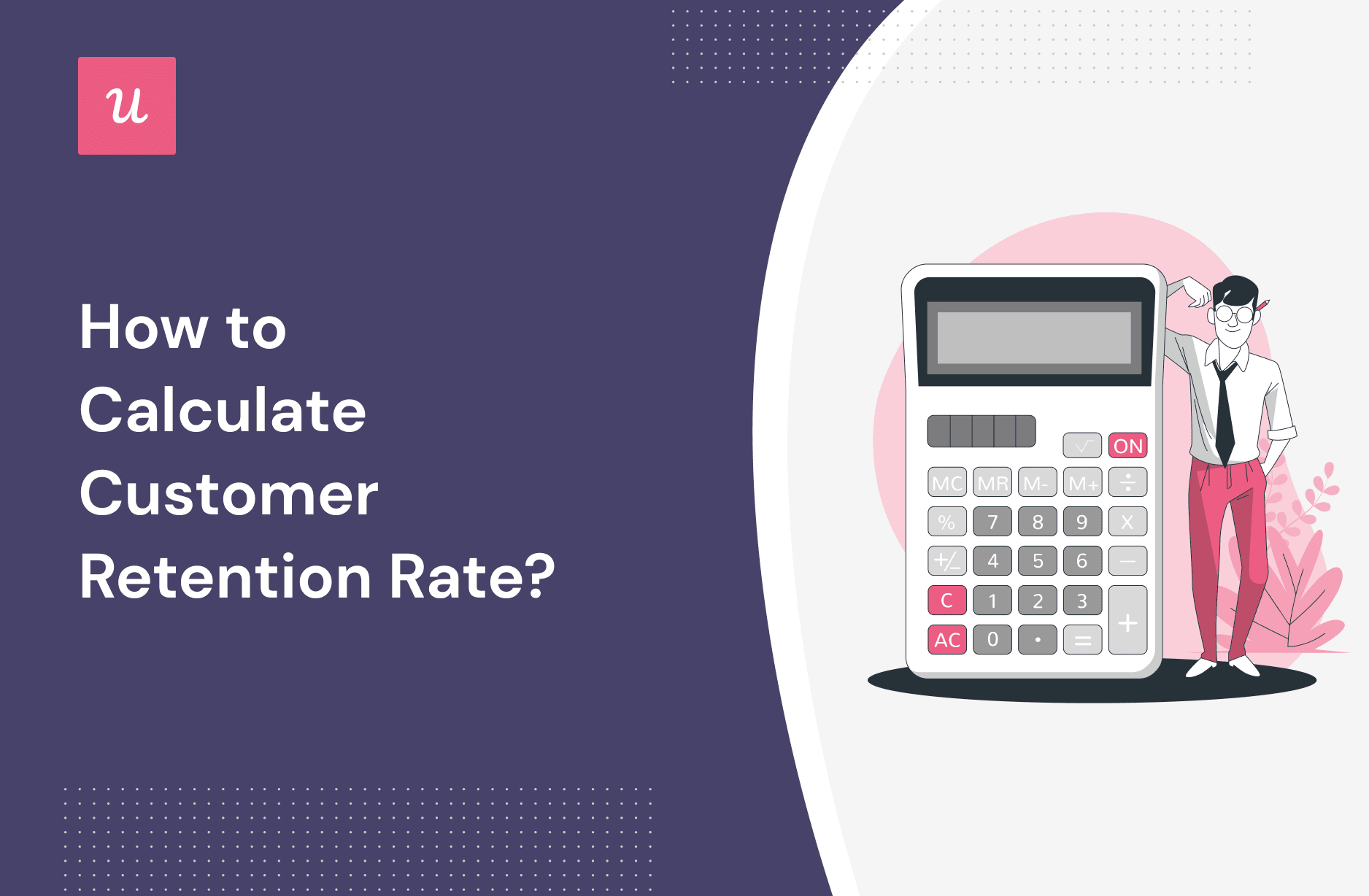
Try Userpilot Now
See Why 1,000+ Teams Choose Userpilot

What is customer retention rate?
Customer retention rate is a key business metric that calculates the percentage of customers a company retains over a specific timeframe, excluding new customers. You’ll find most companies measure customer retention on a monthly or annual basis.
It is a measure of customer loyalty and satisfaction, and it’s important to keep track of and improve as, typically, it’s more cost-effective to retain existing customers than to acquire new ones.
Why is customer retention rate important for SaaS companies?
Customer retention rate is a metric that all SaaS companies should measure to help their success. Monitoring these metrics helps:
- Monitor important customer factors: Customer retention rate can help you understand customer loyalty and satisfaction. If you have a low retention rate, something in your product impacts the customer experience.
- Understand customer behavior: Customer retention rate can help to uncover the behavior that leads them to continue using your product. It can also reveal what is causing them to leave.
- Cost-effective: Measuring customer retention rate helps to monitor any changes that can help to improve the rate. Retaining existing customers is much more cost-effective than acquiring new ones.
How to calculate customer retention rate?
The customer retention rate formula takes the number of customers paying at the end of a specific timeframe minus the number of customers acquired during that time.
You then divide that result by the total number of customers at the beginning of that timeframe. And finally, multiply by 100 to get the user retention rate.
For example, if a company starts with 100 customers, loses 10 but gains 20 new customers in a given period, the retention rate would be:
Retention rate: ((110 – 20) / 100 )) x 100 = 90%
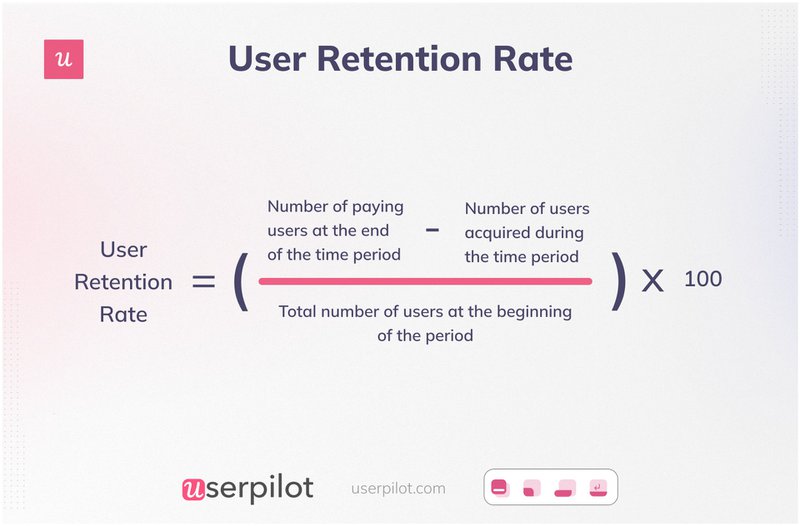
What is a good retention rate?
An ideal but typically unattainable customer retention rate is 100%, while the lowest possible rate is 0%. Different industries have unique average customer retention rates that fall between these extremes. However, the standard customer retention rate across various industries typically ranges from 70% to 80%.
What is the main goal of customer retention?
Choose the best description of what customer retention means.
Why is it important to keep existing customers?
There is a major financial benefit to focusing on retention.
What is the opposite of retaining a customer?
When a customer decides to leave your service or stop buying, it’s called…
What’s a simple first step to improve retention?
How can you learn what makes customers want to stay or leave?
Ready to improve your customer retention rate?
Userpilot can help you analyze customer behavior, gather feedback, and create in-app experiences that boost loyalty and reduce churn. See how it works.
Customer retention rate vs customer churn rate
The customer retention and churn rates serve as complementary metrics that provide a comprehensive view of customer engagement and loyalty.
They measure different customer data points, with retention rate concentrating on positive elements such as repeat customers, while churn rate focuses on negative aspects such as attrition.
The sum of the retention and customer churn rate typically equals 100%, and a higher retention rate usually means a lower churn rate, and vice versa.
Other key customer retention metrics
They are other key customer retention metrics that you should consider measuring in your business.
Revenue churn rate
Revenue churn rate represents the monthly recurring revenue from existing customers over a specific period. It calculates the percentage of revenue lost through cancellations, downgrades, or non-renewals of subscriptions.
It measures the percentage of revenue a company has lost from its existing customer base in a specific time frame.
This can occur through various channels, including losing customers or decreased spending from existing customers.
Understanding the revenue churn rate is vital for assessing customer loyalty and retention. A high churn rate may indicate customer dissatisfaction, leading to lost revenue opportunities.
Tracking this metric helps you identify underlying issues, implement targeted retention strategies, and improve customer satisfaction.
How to calculate revenue churn rate
You can calculate the revenue churn rate by taking the net revenue lost from customers in a specific timeframe and dividing it by the total revenue at the beginning.
For example, if a company started the month with $10,000 in revenue and lost $1,000 due to churned customers during that month, then:
Revenue churn rate = 1000 / 10,000 x 100 = 10%
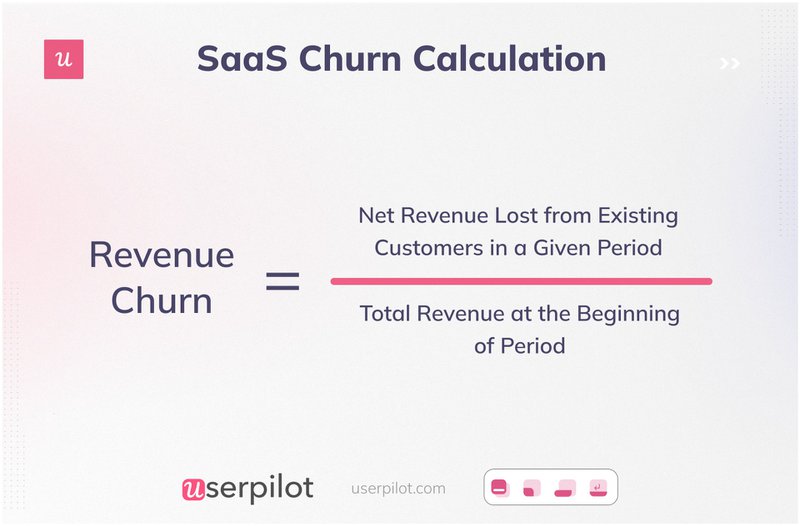
Net Promoter Score
The Net Promoter Score (NPS) gauges customer loyalty by asking customers how likely they are to recommend a product to others.
It categorizes respondents into Promoters, Passives, and Detractors based on their responses.
NPS measures customer satisfaction and loyalty by evaluating how likely customers are to recommend a company’s products or services. It provides insights into customer sentiments and perceptions about a brand.
A high NPS indicates that customers are satisfied and more likely to act as advocates for the brand, leading to organic growth and retention.
Conversely, a low NPS might signal underlying issues with customer satisfaction that could lead to higher attrition. Monitoring NPS helps businesses fine-tune their strategies to enhance customer relationships and loyalty.
How to calculate Net Promoter Score
You can calculate NPS by taking the number of promoters minus the number of detractors.
Promoters are customers that score either 9 or 10.
Detractors are customers that score 6 or below.
For example, if out of 100 customers surveyed, 70 are Promoters, 20 are Passives, and 10 are Detractors, then:
NPS = 70% – 10% = 60
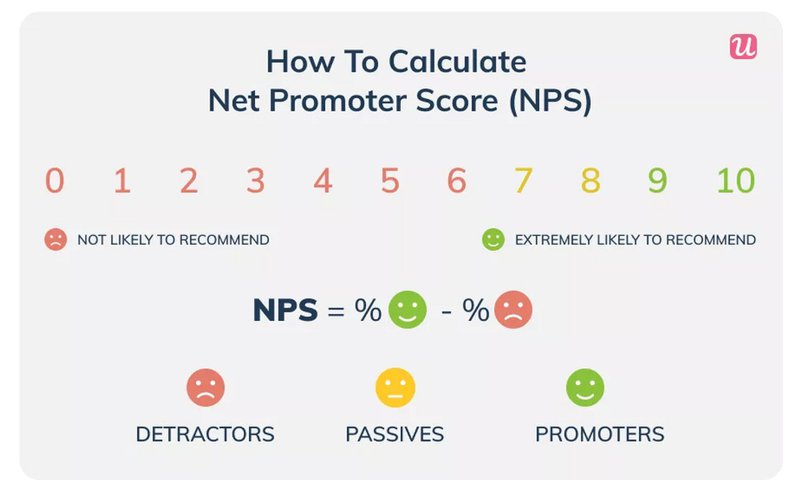
Repeat purchase rate
The repeat purchase rate represents the percentage of customers who have made more than one purchase within a defined time frame.
This metric measures customer loyalty by analyzing how often customers return to make additional purchases.
It offers insights into how compelling and satisfying a product or service is to existing customers. The repeat purchase rate is more relevant for e-commerce, whereas it helps measure customers renewing subscriptions in SaaS.
A higher repeat purchase rate indicates satisfied customers, revealing the effectiveness of products and customer service in encouraging return business. Tracking this rate is crucial for businesses that foster loyalty among retained customers and cultivate long-term customer relationships.
How to calculate repeat purchase rate
You can calculate the repeat purchase rate by taking the number of repeat purchase customers and dividing it by the total number of customers.
For example, If there are 200 total customers and 40 of them have made more than one purchase, then:
Repeat purchase rate = 40 / 200 x 100 = 20%
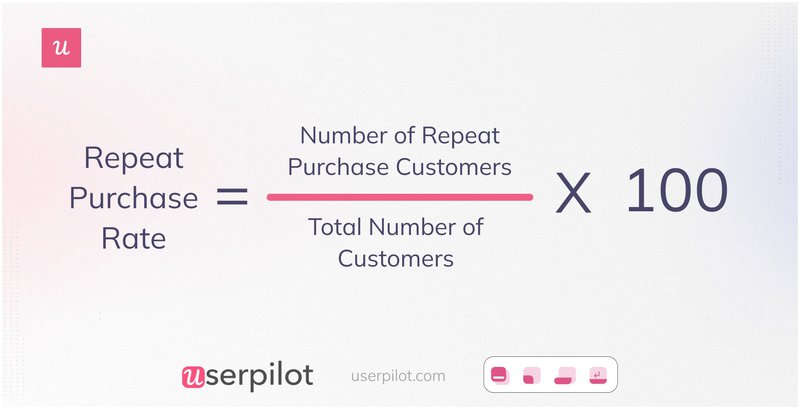
Customer Lifetime Value (CLV) calculates the total value a customer contributes to a business over the entire relationship. It includes purchase frequency, average purchase value, and customer lifespan.
CLV accounts for both the revenue generated from the customer and the costs associated with acquiring and serving them.
Understanding CLV allows businesses to gauge the long-term value of their customers, guiding decisions on marketing spend and customer service efforts.
A focus on maximizing CLV emphasizes the importance of retention over mere acquisition, encouraging strategies that nurture ongoing customer relationships and loyalty.
How to calculate customer lifetime value
You can calculate customer lifetime value by first working out the customer value. You calculate customer value by multiplying the average purchase value by the average purchase frequency rate.
Once you have the customer value, you multiply it by the average customer lifespan.
For example, if a customer has a subscription that costs $50 per month and remains a customer for 5 years, then:
Customer lifetime value = (50 x 12) x 5 = $3,000
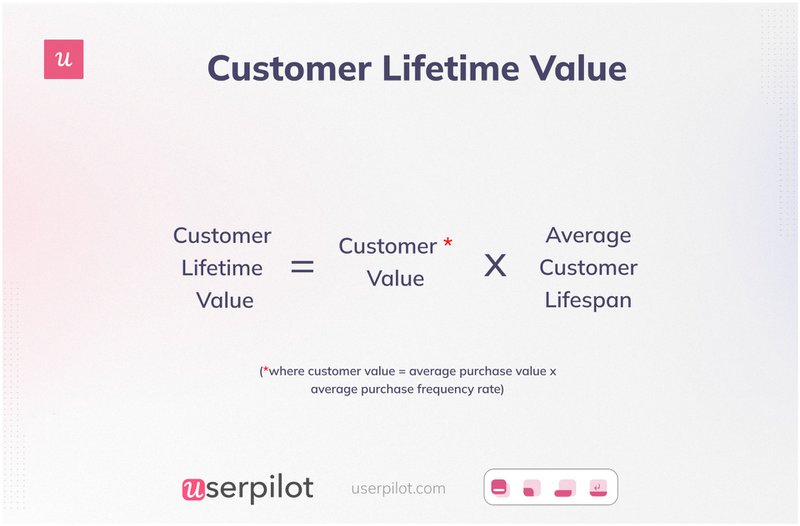
How to improve customer retention rates
Now that you know how to calculate customer retention rate, let’s look at improving your rates. You can use proactive engagement alongside other tactics to keep users returning to use your product.
Implement feedback into customer retention strategy to improve customer experience
You can collect feedback directly from customers to find out what may be causing customer dissatisfaction and leading them to churn. Then you can devise a strategy to improve those areas, increasing customer experience.
To collect feedback from existing customers, you can trigger in-app surveys at certain points in your product. These surveys can help you to identify any friction points in your product. And they can also help to highlight what might be causing customers to leave your app.
Reaching out to customers proactively fosters an attitude of continuous improvement in your product, which can only relate to high retention rates due to the improvements you’re making.
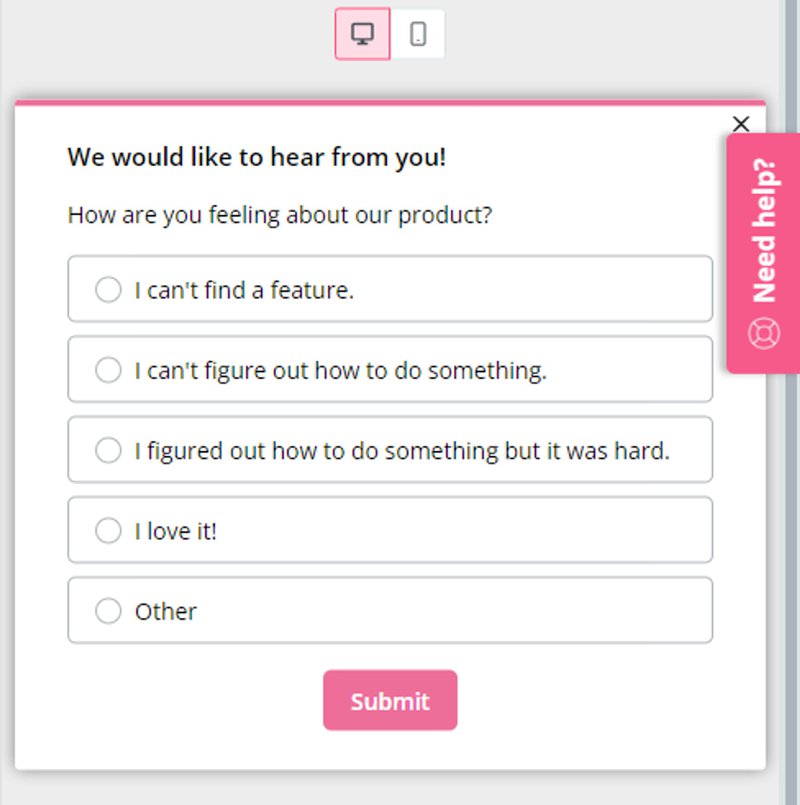
Analyze the journey of your loyal customers and duplicate it for new users
You should learn from analytics which customer journey leads to higher retention rates, then lead new customers through this journey to try and create more customers that stick around.
The journey of your loyal customers is the best to analyze as this path, often called the “happy path,” is the most successful in creating customers that continue to use your product.
Once you understand what constitutes the “happy path,” such as completing certain milestones of the customer onboarding, you can recreate this for new customers with the same goals as those loyal customers. The hope is that going through the same as loyal customers will create similar customers.
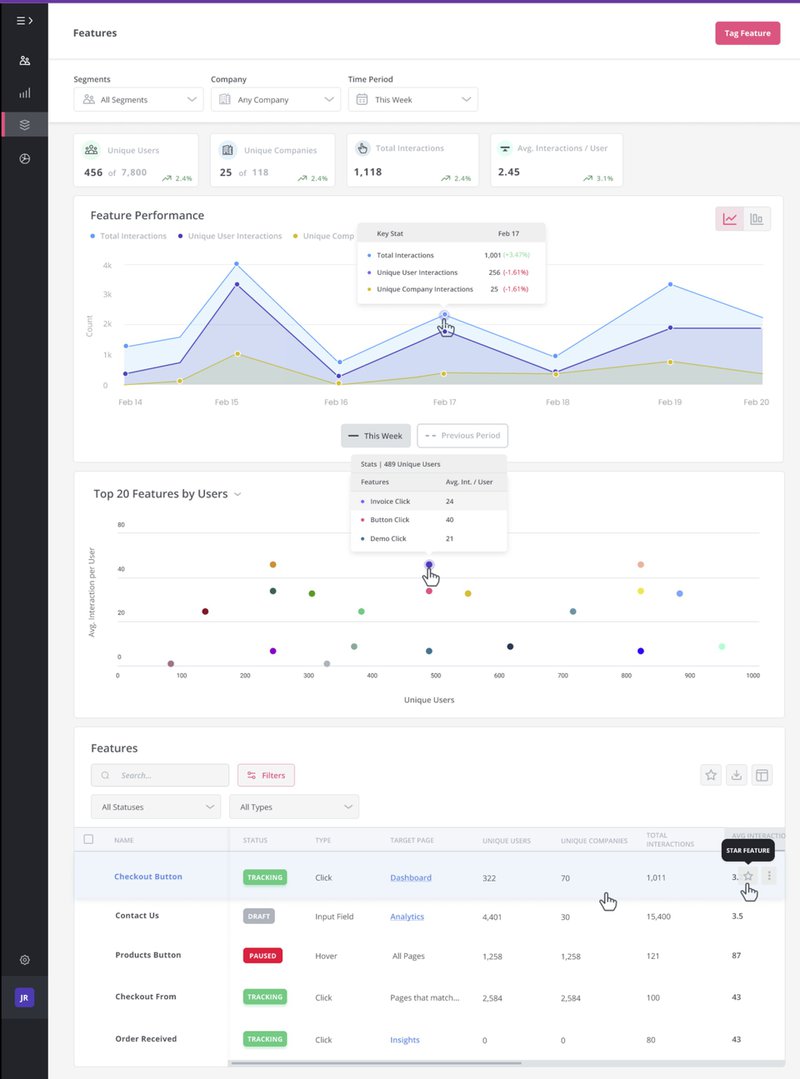
Trigger churn surveys to identify and fix reasons behind churn
Using surveys can help you understand why a customer is leaving you so you can address those reasons and prevent future customers from doing so.
When customers decide to cancel their subscriptions, you can trigger churn surveys to find out why.
There are two benefits of doing this. First, you can understand why customers are churning and work on issues raised.
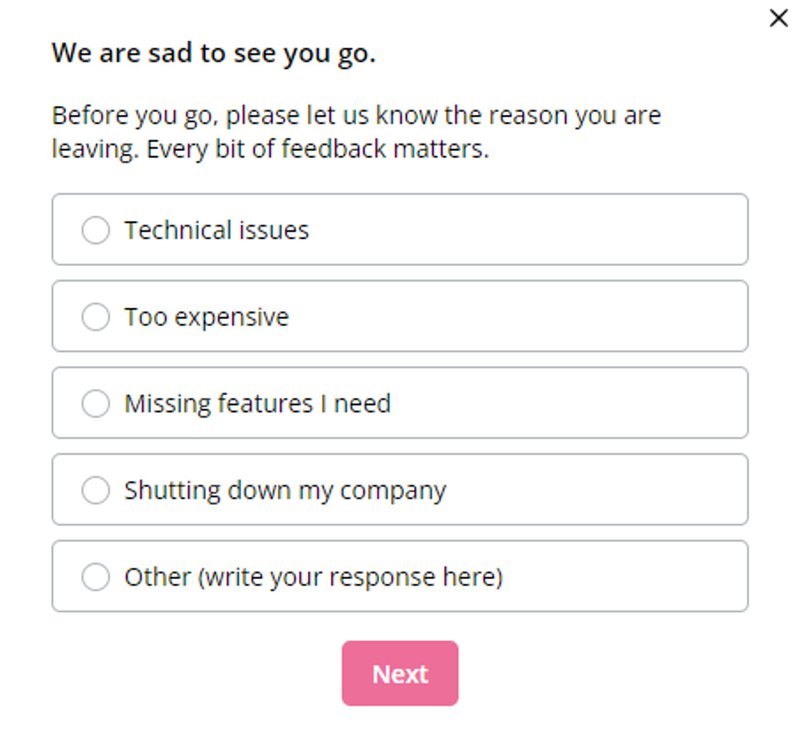
The second is with knowing what is causing them to churn. You can send personalized win-back emails to try and entice them back.
For example, if a customer chooses the option “missing features I need” on their churn survey, you can tag those customers in your email service provider. When you develop the feature that customers have indicated is missing, you can create an audience segment with those tags and send a win-back email with an update.
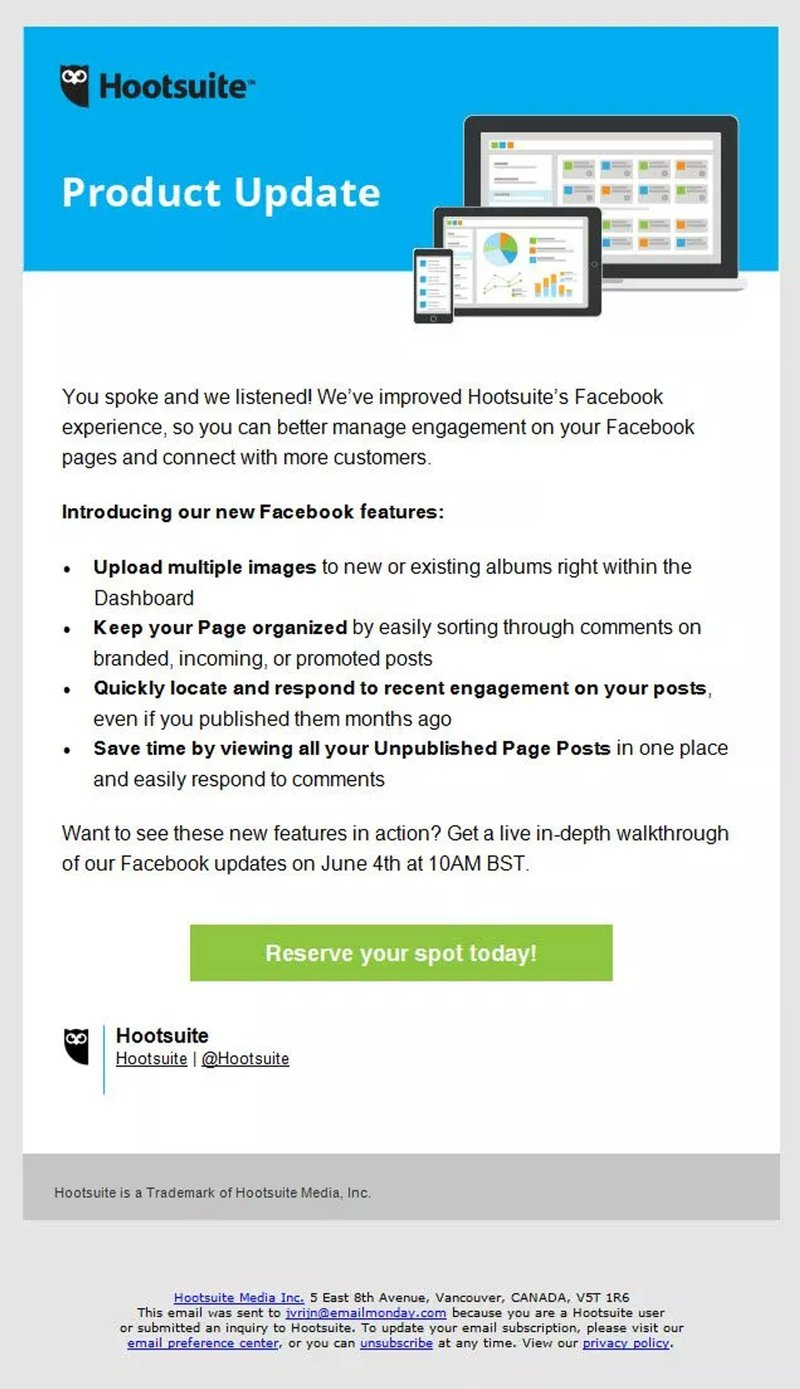
Conclusion
The customer retention rate is an important metric to measure in your SaaS. Not only does it tell you how well you are keeping customers returning to your product, but it also can indicate how well you are impacting improve the user churn rate.
The key to remember when you’re looking to improve customer retention rate is to focus on making the customer experience better. And the best way of understanding this is by collecting that information from your customers.
Want to get started with improving your customer retention rate? Get a Userpilot Demo and see how you can monitor and implement changes to improve it.





